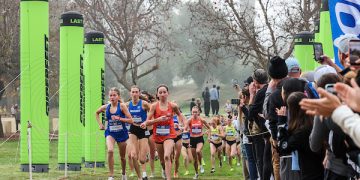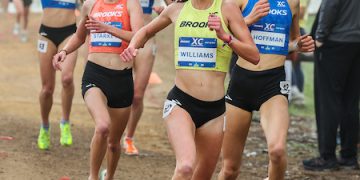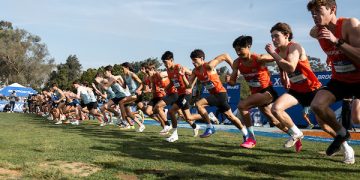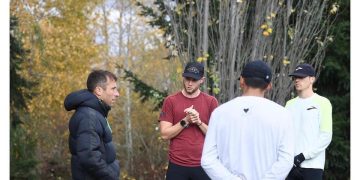 Steve Jobs, courtesy of Crunchbase
Steve Jobs, courtesy of Crunchbase
The following piece was written by Peter Abraham. Peter is a friend of mine who has spent his adult life in the media world. We text each other, tweet each other most days, and converse on the world of media and our sport, track & field. The following column came out of several observations by Peter, and I asked him to follow up with a thought piece.
Tell us what you think. You can reach me, anytime at [email protected] or [email protected].
RelatedPosts
What USA Track & Field Can Learn from Steve Jobs
I saw that USA Track & Field, after almost two years without a leader, hired Max Siegel as its new CEO. As the search process dragged on month after month, year after year, I began to understand that “the problem” was not the lack of suitable CEO candidates, but an organization that is trying to do too much.
The most successful organizations focus on doing a few things really well. The most obvious example would be Apple, who have become the world’s most valuable company on the backs of a very few products. One of my favorite Steve Jobs quotes discusses exactly this strategy: “That’s been one of my mantras — focus and simplicity. Simple can be harder than complex: You have to work hard to get your thinking clean to make it simple. But it’s worth it in the end because once you get there, you can move mountains.”
Meanwhile, contrast that with Sony, which has a huge and unfocused line-up of mostly unremarkable products aimed at no one in particular. Organizations don’t need to be all things to all people. When I was at the Los Angeles Marathon, my colleague Russ Pillar used to ask, “What is our circle of excellence? Where do we have world class skills?” Those are questions that USATF should be asking itself right now.
A quick scan of the USATF website reveals a dizzying array of responsibilities: coaching, training, youth athletes, masters athletes, race walking, cross country, championship bids, a foundation, field events, course certification, merchandise, and even a branded credit card. And this is only a fraction of the things the organization has listed there. They do have this mission statement buried deep in the site: USA Track & Field drives competitive excellence and popular engagement in our sport. On the surface this makes sense. But in fact it’s much too broad in today’s world of specialization. The statement probably sounded great when the organization was spun off from the Amateur Athletic Union in 1979. At that time it was called The Athletics Congress, with the name change to USATF in 1990.
The mission statement mentions their responsibility for …popular engagement in our sport. This is a nice thought, but USATF has no relevance whatsoever for the average runner out there. And beyond measuring and certifying courses, the organization is also completely detached from most running events on the road. In this era of thousands of running races and about 10 million runners, it is wishful thinking for USATF, with limited staff and budget, to handle “popular engagement” at any meaningful scale.
No matter who takes the helm of USATF right now, no leader can be successful with the current mile-long list of responsibilities. USATF should conduct its own “circle of excellence” exercise and determine what it is truly good at. In doing so, they’d surely understand that they are radically understaffed and underfunded to execute many of their initiatives at even a basic level. Furthermore, USATF ends up competing for members with the Road Runners Club of America and, at the youth level, with the AAU.
Take for instance the production and management of national championship events. They’re stuck with either farming the events out to local promoters with inconsistent skills and tiny budgets, or trying the DIY approach, for which USATF is understaffed. There simply isn’t the expertise at Indianapolis HQ to sell sponsorships, handle logistics, manage media, and to execute all of the other things required to produce a national-level event. If, like many of its athletes, USATF wants to be world class, it needs to focus on a smaller list of priorities.
The USATF would be a much stronger organization if it could be truly outstanding at 5-10 things instead of mediocre at 100 things. I hope that Max Siegel, and the board of directors, considers a radical makeover of the organization. Otherwise, we’ll be left with more Sony and less Apple.
Peter
Abraham lives at the intersection of outdoor sports, media, and
communications. He works with a wide variety of consumer brands, events,
and media companies. You can reach him at [email protected] or on Twitter @PeterAbraham.
Author
-

Larry Eder has had a 52-year involvement in the sport of athletics. Larry has experienced the sport as an athlete, coach, magazine publisher, and now, journalist and blogger. His first article, on Don Bowden, America's first sub-4 minute miler, was published in RW in 1983. Larry has published several magazines on athletics, from American Athletics to the U.S. version of Spikes magazine. He currently manages the content and marketing development of the RunningNetwork, The Shoe Addicts, and RunBlogRun. Of RunBlogRun, his daily pilgrimage with the sport, Larry says: "I have to admit, I love traveling to far away meets, writing about the sport I love, and the athletes I respect, for my readers at runblogrun.com, the most of anything I have ever done, except, maybe running itself." Also does some updates for BBC Sports at key events, which he truly enjoys.
Theme song: Greg Allman, " I'm no Angel."
View all posts





















